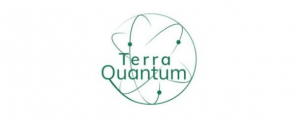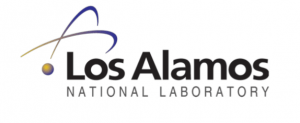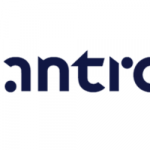Quantum News Briefs June 30: Terra Quantum acquires divis intelligent solutions to accelerate development and application of classical and hybrid quantum algorithms; The World Economic Forum & Deloitte collaborate to launch the Quantum Readiness Toolkit; LANL researchers lay groundwork for enhanced performance in quantum AI with overparametrization + MORE

Quantum News Briefs June 30: The World Economic Forum & Deloitte collaborate to launch the Quantum Readiness Toolkit;
 Terra Quantum has acquired divis intelligent solutions GmbH (divis), a leading pioneer in classical optimization and machine learning algorithms. Quantum News Briefs summarizes.
Terra Quantum has acquired divis intelligent solutions GmbH (divis), a leading pioneer in classical optimization and machine learning algorithms. Quantum News Briefs summarizes.
divis pioneers the application of evolutionary techniques and algorithms to enable efficient data analysis, automatic machine learning, and process optimization. The company serves clients in automotive, chemical, consumer, energy, and synthetic material sectors (e.g., 3M, BMW Group, IOI Oleo GmbH, Dr. Ing. h.c. F. Porsche AG).
“Maximizing utilization of quantum computing power requires the right combination of classical and quantum algorithms. Combining the technologies of both companies will take application of quantum technology to the next level. This will enable to efficiently solve more real-world business challenges today,” said Markus Pflitsch, CEO of Terra Quantum.
The acquisition of divis complements Terra Quantum’s existing algorithm capabilities, while divis’ customers gain access to quantum technology. By combining divis’ expertise in classical algorithms with Terra Quantum’s quantum computing know-how, both companies will together accelerate the development of classical and hybrid quantum algorithms. The integration will reduce complexity for customers and make solution development easier and faster.
Specifically, the advancement of Generative AI with its increasing demand for compute will not only require a hybrid approach merging classical and quantum technologies, but also superior classical machine learning algorithms. Combining Terra Quantum’s and divis’ expertise will result in the development of innovative techniques and methodologies specifically tailored to generative AI, ultimately pushing the boundaries of what is currently possible in terms of AI-generated content and applications.
Specifically, the advancement of Generative AI with its increasing demand for compute will not only require a hybrid approach merging classical and quantum technologies, but also superior classical machine learning algorithms. Combining Terra Quantum’s and divis’ expertise will result in the development of innovative techniques and methodologies specifically tailored to generative AI, ultimately pushing the boundaries of what is currently possible in terms of AI-generated content and applications. Click here to read the complete announcement on Terra Quatum website.
The World Economic Forum & Deloitte collaborate to launch the Quantum Readiness Toolkit


The World Economic Forum and Deloitte collaborated and have released actionable guidance to help protect organizations during the rapid development of quantum computing technology. The Quantum Readiness Toolkit provides specific guidance in line with the overall framework presented in last year’s flagship report, “Transitioning to a Quantum-Secure Economy.”
“The Forum has developed specific messaging for executive leaders to help mitigate quantum risk. This is important as many discussions on this topic get bogged down about when a quantum computer will be available to mount these types of attacks. The dialog should be much more about preparing today while you still have time so that quantum risk can be methodically mitigated and businesses can continue to thrive without fear of disruption,” commented Colin Soutar, managing director and Deloitte co-lead for WEF Quantum Security support at Deloitte.
Advancements in quantum computing have the potential for systemic cybersecurity risk, whether through increased breaches of sensitive health and financial personal data, compromised private communications, or forged digital versions of information, identities and sensitive data. The new paper, “Quantum Readiness Toolkit: Building a Quantum Secure Economy,” outlines five principles businesses and organizations should follow when building their quantum security readiness. These include:
- Ensuring the organizational governance structure institutionalizes quantum risk: Effectively enforce change through embedding quantum readiness transition efforts within the organization.
- Raising quantum risk awareness throughout the organization: Avoid fear-focused conversations and help leaders stay informed about advances in quantum threats.
- Treating and prioritizing quantum risk alongside existing cyber risks: Use existing cyber risk management methods to help mitigate the quantum threat.
- Making strategic decisions for future technology adoption: Assess the current technological infrastructure, invest in new, emerging technologies and consider novel concepts like crypto-agility.
- Encouraging collaboration across ecosystems: Collaborate with other organizations to identify systemic risks throughout the ecosystem.
- LANL researchers lay groundwork for enhanced performance in quantum AI with overparametrization
Click here to read the announcement in-entirety.
LANL researchers lay groundwork for enhanced performance in quantum AI with overparametrization
 LANL has announced a groundbreaking theoretical proof that shows a technique called overparametrization enhances performance in quantum machine learning for applications that stymie classical computers. Quantum News Briefs summarizes.
LANL has announced a groundbreaking theoretical proof that shows a technique called overparametrization enhances performance in quantum machine learning for applications that stymie classical computers. Quantum News Briefs summarizes.
“We believe our results will be useful in using machine learning to learn the properties of quantum data, such as classifying different phases of matter in quantum materials research, which is very difficult on classical computers,” said Diego Garcia-Martin, a postdoctoral researcher at Los Alamos National Laboratory. He is a co-author of a new paper by a Los Alamos team on the technique in Nature Computational Physics.
Machine learning, or artificial intelligence, usually involves training neural networks to process information — data — and learn how to solve a given task. In a nutshell, one can think of the neural network as a box with knobs, or parameters, that takes data as input and produces an output that depends on the configuration of the knobs.
“By establishing the theory that underpins overparametrization in quantum neural networks, our research paves the way for optimizing the training process and achieving enhanced performance in practical quantum applications,” explained Martin Larocca, the lead author of the manuscript and postdoctoral researcher at Los Alamos.
By taking advantage of aspects of quantum mechanics such as entanglement and superposition, quantum machine learning offers the promise of much greater speed, or quantum advantage, than machine learning on classical computers. Click here to read the announcement in-entirety.
U of Tokyo scientists successfully arranged nanoscale quantum sensors on desired targets
 The delicate work of positioning quantum sensors at the nanoscale as been completed by researchers from the University of Tokyo, enabling them to detect incredibly minute differences in magnetic fields, according to June 14 article by Amit Malewar in TechExplorist.
The delicate work of positioning quantum sensors at the nanoscale as been completed by researchers from the University of Tokyo, enabling them to detect incredibly minute differences in magnetic fields, according to June 14 article by Amit Malewar in TechExplorist.
The project aimed to create stable quantum sensors that could be put close to objects like discs and wires. To date, however, it has been difficult to precisely arrange atoms in a way that allows for the ability to detect minute fluctuations in the magnetic field.
Kento Sasaki, an Assistant Professor at the University of Tokyo, says, “Although individual quantum sensors are small, their spatial resolution is restricted by the distance between the sensor and the measurement target. To solve the problem, the researchers established a technique for creating nano-sized quantum sensors on the surface of the measurement target.”
The team used two-dimensional hexagonal boron nitride, a thin crystalline substance having nitrogen and boron atoms, as quantum sensors. Boron vacancies or lattice defects are found in this material. As a quantum spin sensor discovered in 2020, the boron vacancy defect is the new kid on the block.
Sasaki said, “Scientists are now planning to apply this technique for research on condensed matter physics and quantum materials. It will enable direct detection of the magnetic field from, for example, peculiar states at edges of graphene and microscopic quantum dots.”
Beginning to revolutionize how humans see microscopic environments and hence comprehend macroscopic features are atom-sized quantum sensors. Their uses go beyond fundamental scientific inquiry. They can map subsurface ecosystems, picture human brains, precisely geolocate, and track geological movements and volcano eruptions. The prospective applications of Sasaki and his team’s nanoscale quantum sensors in semiconductors, magnetic materials, and superconductors are still being explored. Click here to read Tech Explorist article in-entirety.
Sandra K. Helsel, Ph.D. has been researching and reporting on frontier technologies since 1990. She has her Ph.D. from the University of Arizona.





















